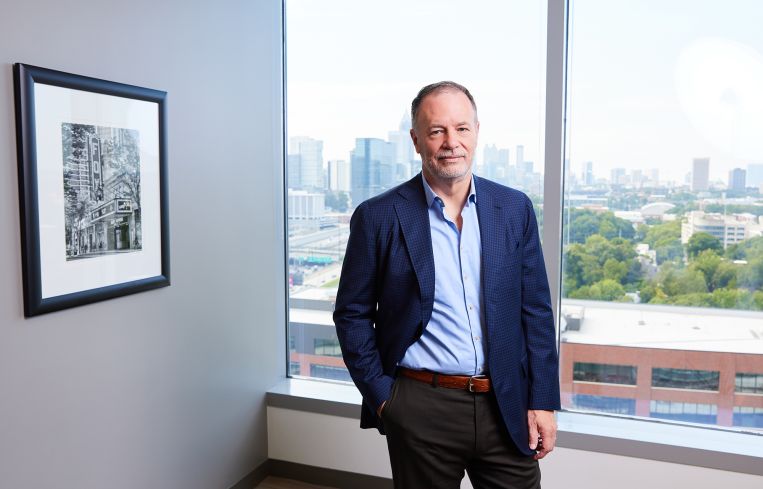Sunday Summary: Everybody Back to Work
By The Editors September 7, 2025 9:00 am
reprints
Labor Day has come and gone. Little ones holding “First Day of School” signs stampeded all over our Facebook pages. It’s time to get back to work.
Well, that sounds fine — except we were working all summer long!
Like kids consigned to summer school, many in the real estate industry didn’t leave their desks this August.
“It’s been a good and busy summer,” declared Greg Newman, the head of construction lending for Bank OZK, in last week’s cover story.
And while this has been the case almost everywhere in commercial real estate, there are certainly markets that stand out.
“Our main focus has been condos in Florida, and then multifamily and industrial deals in the Southeast,” said Newman. “Those are the deals that seem to make the most sense to us today. As far as markets go, South Florida is our largest market, so the Miami metro area. It’s our largest book at the bank, and it’s been a really good market for us.”
Indeed, the activity in South Florida is difficult to miss. Since Labor Day, CO reported that David Martin and Michael Stern had plunked down $120 million for a condominium development called Bay Garden Manor at 1250 West Avenue in Biscayne Bay with plans to redevelop the property as an even more luxe condo.
Over in Fort Lauderdale, Genesis US Properties bagged $40.89 million in construction financing from Hall Structured Finance to build a 144-key Hotel Indigo.
And Federal Capital Partners picked up District West Gables, a 711,840-square-foot multifamily complex at 2001 and 2101 Southwest 67th Avenue in West Miami, Fla., for $111 million (which is actually about $5 million less than the properties traded for a few years ago).
Don’t forget about Midtown
Florida is fine, but a number of CRE players aren’t taking prime Manhattan for granted.
Last week there were the leases like Rho expanding its footprint at GFP Real Estate’s 100 Crosby Street; and the AI-powered writing platform Grammarly taking a chunk of space at BXP’s 360 Park Avenue South; and the Port Authority of New York and New Jersey logging 17,313 square feet at Sioni Group’s 320 West 37th Street in Hudson Yards. All very positive signs.
But there were also sales. Significant sales.
The big kahuna would have to be Norges Bank Investment Management laying down $542.6 million to buy 1177 Avenue of the Americas from Silverstein Properties and the California State Teachers’ Retirement System. (Beacon Capital Partners also acquired a 5 percent stake through the deal and will manage the property.)
Blackstone is throwing an estimated $100 million into JEMB Realty’s Herald Towers at 50 West 34th Street as a preferred equity investor.
An overseas mystery buyer is apparently spending $188 million on the embattled Cohen Brothers Realty’s 3 East 54th Street just one week after Cohen Brothers offloaded 623 Fifth Avenue to Vornado Realty Trust.
And, not to be left out, Savanna and Summit Properties are planning to shell out $50 million for the leasehold at 444 Madison Avenue. (That seems to be the magic number on Madison Avenue. Amancio Ortega — of Zara fame — is selling 366 Madison Avenue to the Sioni Group for $50 million, which is 57 percent less than the $115.6 million he paid for the building back in 2004!)
The thing that’s most interesting about all this activity is that it’s all offices.
Indeed, there’s been a significant comeback in areas like Midtown South, which suffered tremendously during COVID. But if you were to look at the biggest leases of 2025 — NYU’s 1.08 million square feet at 770 Broadway or Verizon’s 203,000-square-foot lease at Penn 2 — and rents markedly above where they were in 2019, you wouldn’t know that vacancies just two years ago were stuck at a miserable 16.9 percent.
“During COVID, Midtown South was the slowest to get back on its feet because the tech tenants were more apprehensive about how they were going to come back into the office,” said Newmark’s David Falk. “Toward the end of COVID we started seeing these companies get clarity on the importance of being back in the office, and it was important for them to find buildings that spoke to who they are as a brand.”
None of which is to say that the landlord’s job is over. Far from it.
“The days of signing a lease and handing a tenant cash and saying, ‘You do the work,’ are over,” said Michael Cohen of Williams Equities. “They have been for years, and they appear to be for the foreseeable future.”
Tenants are now expecting landlords to not just provide physical improvements, but to take the lead on implementing them — whatever the costs.
“If a tenant walks in, you say, ‘What do you need?’ They say ‘A, B and C,’ and you make sure you give it to them, because otherwise there are so many options,” said Genci Sela, president of Phase 3 Interiors. “In the past five years, the buildout cost has gone completely to the landlord. It’s very rare that we do a buildout for the tenant.”
Jobs, jobs, jobs
Of course, while the real estate business had a busy summer, not every other industry could say the same. President Trump’s firing of Erika McEntarfer in August did not allay the bad news in the Bureau of Labor Statistics’ Sept. 5 report that only 22,000 jobs had been added to the economy last month. (The ray of sunshine in this? It probably strengthens the case that the Fed will cut interest rates. Another bright spot? Skilled construction job figures were pretty good!)
But, yes, we did see some notable people moves in CRE.
Eastdil Secured plucked Kevin Sheehan from JLL and Sean Gulian from Nuveen Real Estate to co-lead its National Housing Group for Southern California.
WeWork tapped Cushman & Wakefield vet Angela D’Aguanno to be its new chief administrative officer.
And our heads certainly turned when we heard that the Japanese financial services company Nomura Holdings was hiring industry heavyweights Larry Kravetz and Frank Gilhool away from Barclays to lead its U.S. real estate lending platform.
On a sorrowful note
It’s a harrowing number, but in 2023 some 5,000 construction workers around the U.S. committed suicide.
This rate was about 75 percent higher than for men in the general population, according to the Centers for Disease Control and Prevention.
There are a lot of reasons for the higher rates of suicide among construction workers. Some of it comes down to the stress of working a dangerous job for grueling hours. “Everybody wants things built yesterday,” said Shaun Carvalho, chief safety officer at Shawmut Design and Construction. “So there’s always this pressure to get the job done fast. That results in long days, and oftentimes we’ve got big commutes to get to the job sites, so we’re away from home for long periods of time.”
Another part of it undoubtedly has something to do with the chronic pain (and subsequent drug addiction) from work-related accidents.
New York City officials as well as the Building Trades Employers’ Association (BTEA) and the Real Estate Board of New York are calling attention to the problem, with training and educational programs.
“Mental health and suicide are uncomfortable topics for many people, especially for our members and people who work in the construction industry,” said Elizabeth Crowley, president and CEO of BTEA. “We want to raise awareness, because we need to do more to save lives. It’s truly a silent killer.”
This is something that everyone in CRE should take seriously, and it’s something to meditate on during this day of rest.
Speak to you next week.



